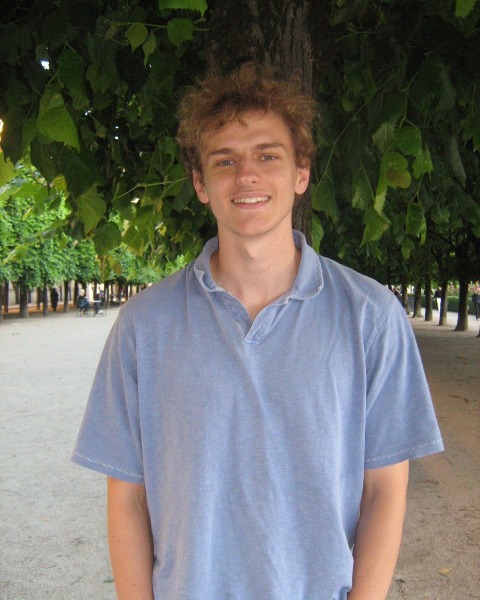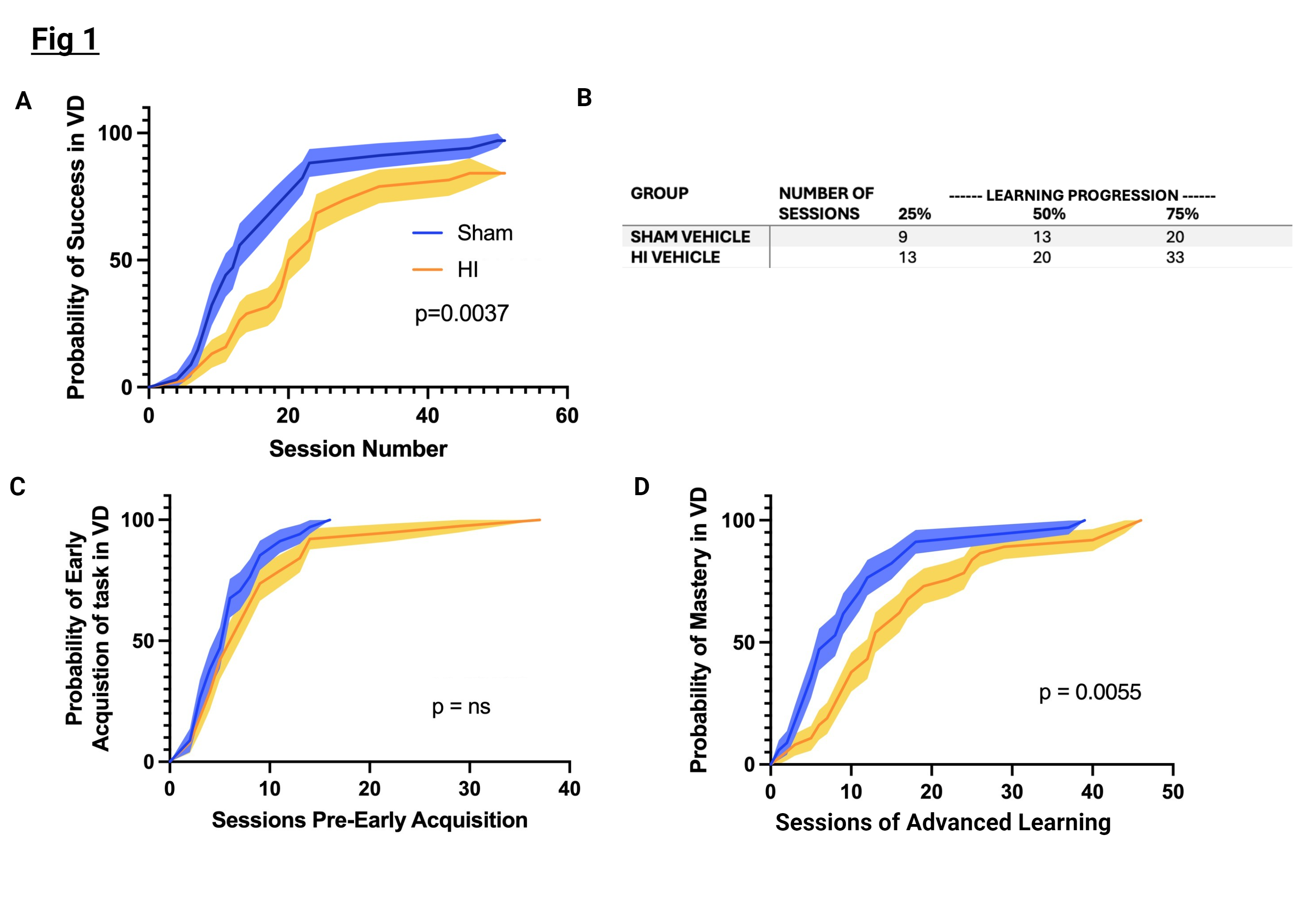Neonatal Neurology 7: Pre-Clinical 1
Session: Neonatal Neurology 7: Pre-Clinical 1
010 - Characteristics of Learning Acquisition in Visual Discrimination and Reversal Learning in a Neonatal Hypoxic-Ischemic Model
Monday, April 28, 2025
7:00am - 9:15am HST
Publication Number: 10.4404
Scott Coleman, Johns Hopkins University School of Medicine, Baltimore, MD, United States; Benjamin Sollinger, Johns Hopkins University School of Medicine, Baltimore, MD, United States; Eli C. Zuercher, Johns Hopkins University School of Medicine, Baltimore, MD, United States; Andrew Cavanagh, Johns Hopkins University, Baltimore, MD, United States; Olivia Hatcher, Johns Hopkins University School of Medicine, Baltimore, MD, United States; Zoha Majeed, Johns Hopkins University, Columbia, MD, United States; Oluwadamilola Giwa, Johns Hopkins University School of Medicine, Baltimore, MD, United States; Nazli Kuter, Johns Hopkins University School of Medicine, Baltimore, MD, United States; Lauren Jantzie, Johns Hopkins University School of Medicine, Baltimore, MD, United States; Gwendolyn Gerner, Kennedy Krieger Institute, Baltimore, MD, United States; Jason Trageser, Johns Hopkins University, Baltimore, MD, United States; Lee Martin, Johns Hopkins University School of Medicine, Baltimore, MD, United States; Frances Northington, Johns Hopkins University School of Medicine, Baltimore, MD, United States

Scott Coleman
Undergraduate Research Assistant
Johns Hopkins University School of Medicine
Baltimore, Maryland, United States
Presenting Author(s)
Background: Learning differences occur after neonatal hypoxia-ischemia (nHI) in humans and translational animal models. These deficits may correlate with connectome changes following nHI or reflect overall brain or selective regional damage.
Objective: To determine how nHI affects the learning process in mice able to master Visual Discrimination (VD) and Reversal Learning (RL).
Design/Methods: Using the Rice-Vannucci model of murine nHI, we recorded performance in touchscreen-based VD (n = 34 Sham, 38 HI) and RL (n = 31 Sham, 31 HI) tasks using K-LIMBIC software. Quantification of how learning progressed as the mice associated one of two stimuli with food and the other with a timeout light (VD), as well as how they adapted to switching the value of the two stimuli (RL), allowed us to track progress in learning acquisition and cognitive flexibility. Mice who reach mastery of the testing paradigm within the 50-session limit were “successful”, while those unable to were “unsuccessful” and excluded from analysis. VD and RL performances were assessed in MATLAB and GraphPad Prism using a time-to-event analysis and probability of success curves to track how learning trends progressed across sessions following sham injury or nHI. In-depth analysis of the learning process in VD and RL included analyzing probability of success on a session-by-session basis, dividing VD learning into early acquisition and advanced learning phases and RL into unlearning and advanced learning phases. Completion of early acquisition/unlearning was marked by ≥15/30 correct trials on 2 consecutive days. Advanced learning was completed and mastery was achieved with ≥26/30 correct trials on 2 consecutive days. Differences were detected with Mantel-Cox tests.
Results: Our data reveals significant disparities in learning between nHI and sham mice overall in both VD (Fig. 1A,B) and RL (Fig. 2A) tasks. HI and Sham mice learn similarly in the early acquisition phase of VD (Fig. 1C). HI mice have differences in advanced learning acquisition in both VD (Fig. 1D) and RL (Fig. 2C). HI mice also showed deficits in unlearning (Fig. 2B), indicatory of cognitive inflexibility. This is the first attempt to examine the learning process in mice who are “successful” in VD and RL despite nHI.
Conclusion(s): These learning process deficits may be consistent with Lashley’s mass action principle and may reflect the connectomics and default mode differences found in other forms of early life brain injury. They may also provide a model to determine the effect of potential therapies on the learning process.
Characteristics of Learning during Visual Discrimination
 (A) Overall probability of success for Sham and HI mice from initial session through achievement of mastery in VD. (p=0.0037) (B) Further characterization of sessions at median and interquartile intervals of achievement of success. (C) Probability of success for Sham and HI mice during early learning acquisition phase. (p=ns) (D) Probability of success during advanced learning to achieve mastery of VD. (p=.0055). Created in BioRender.com
(A) Overall probability of success for Sham and HI mice from initial session through achievement of mastery in VD. (p=0.0037) (B) Further characterization of sessions at median and interquartile intervals of achievement of success. (C) Probability of success for Sham and HI mice during early learning acquisition phase. (p=ns) (D) Probability of success during advanced learning to achieve mastery of VD. (p=.0055). Created in BioRender.comCharacteristics of Learning during Reversal Learning
SC PAS Fig 2 (1).jpeg(A) Overall probability of success for Sham and HI mice from initial session through achievement of mastery in RL. (p=0.0026) (B) Probability of success for Sham and HI mice during unlearning phase of RL. (p=0.0007) (C) Probability of success during advanced learning to achieve mastery of RL. (p=.0316). Created in BioRender.com

